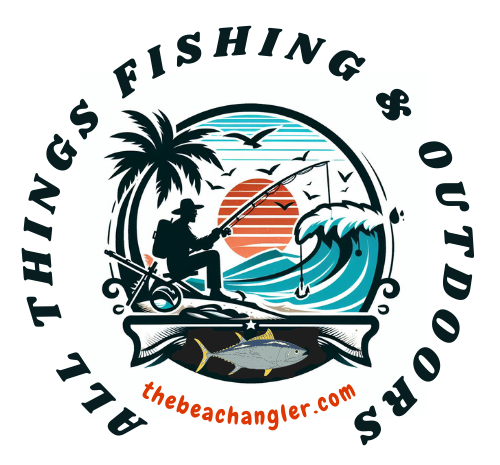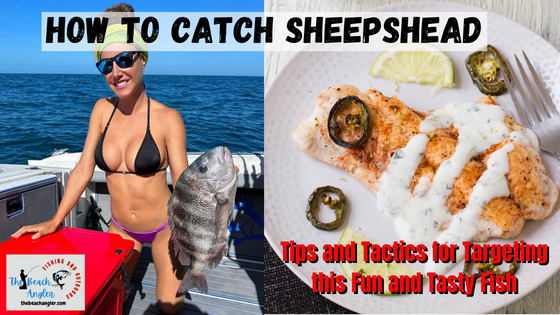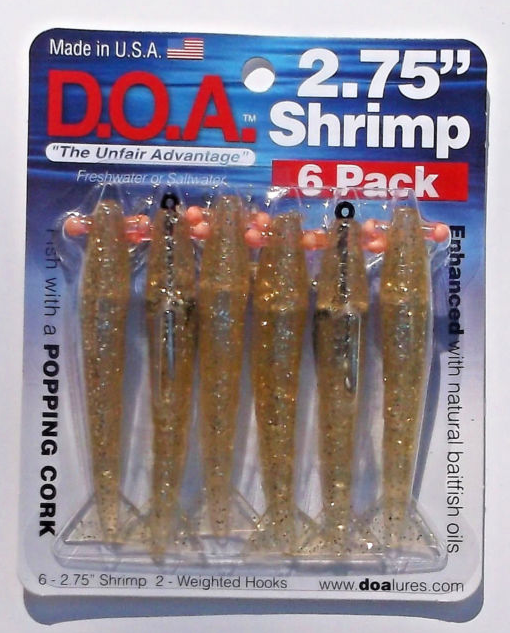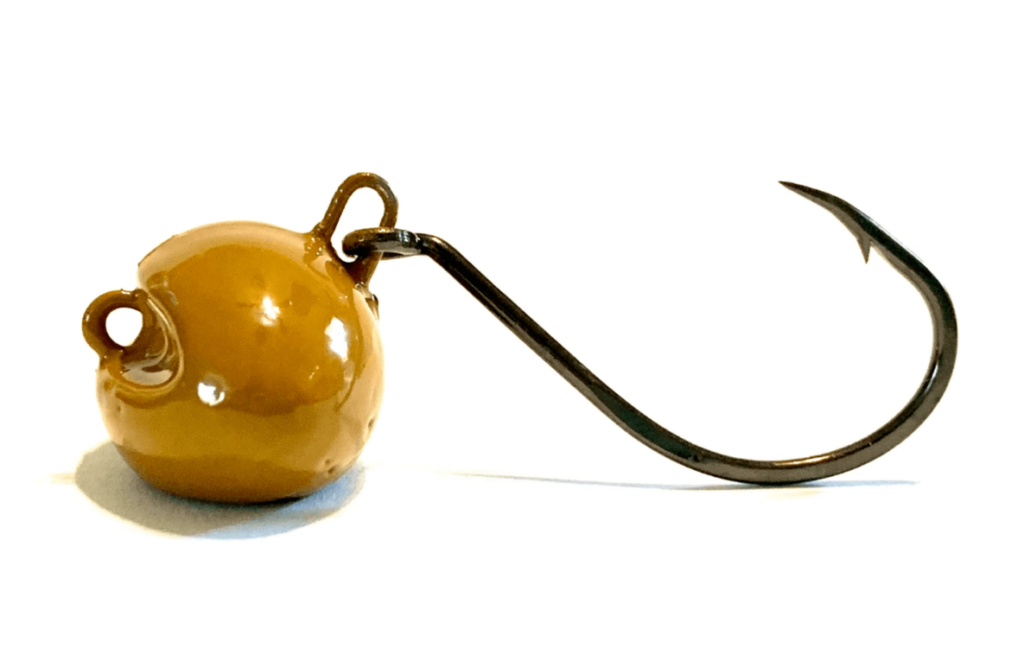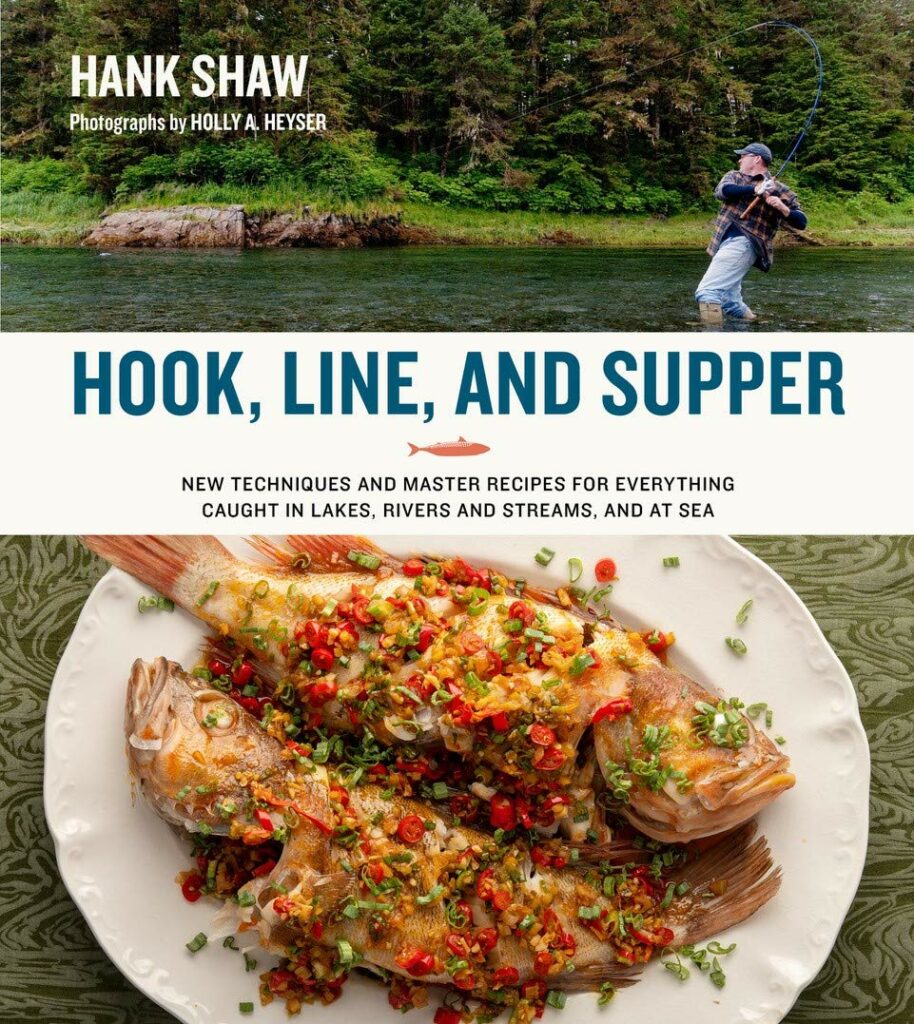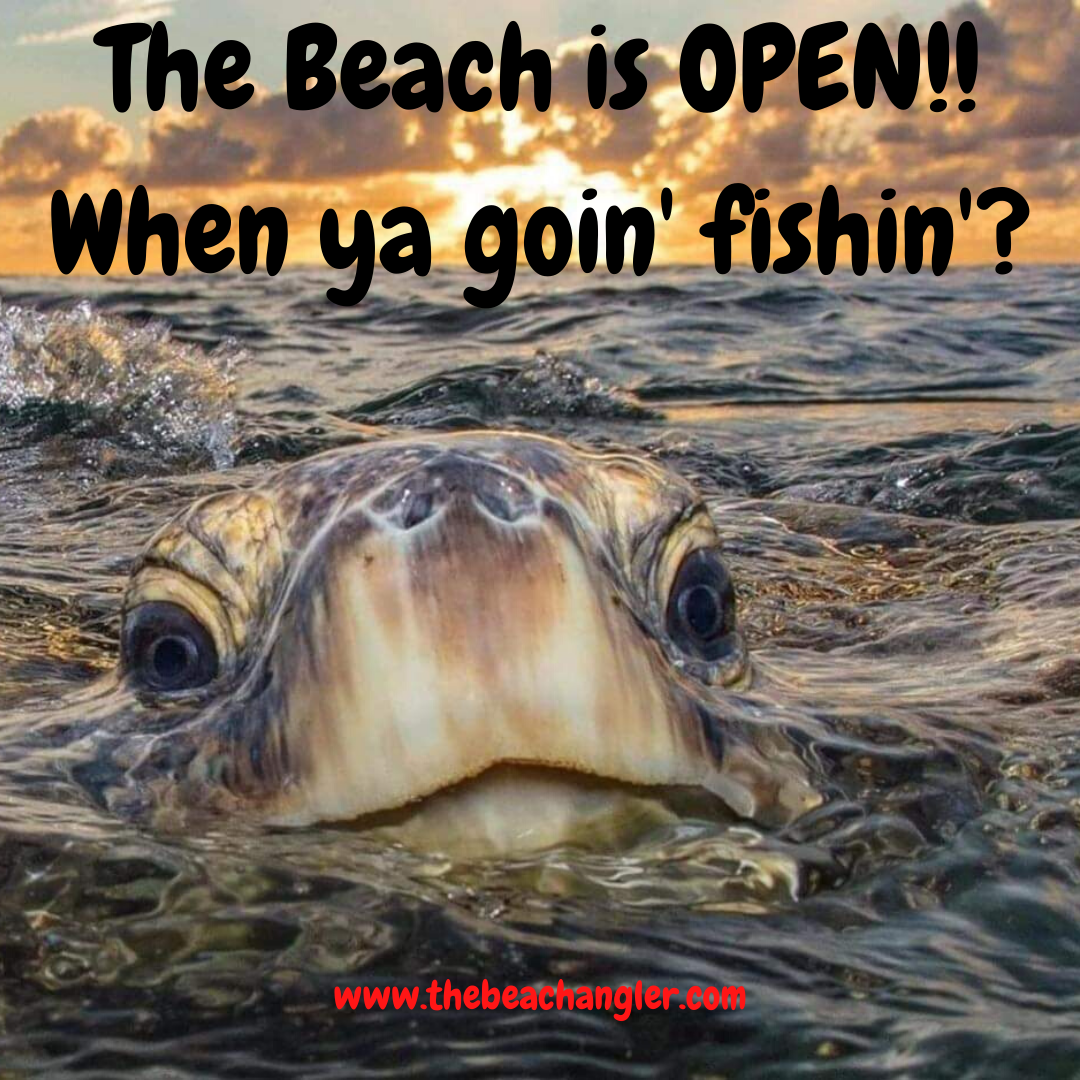We’ve all experienced the reductions in bag limits for our favorite sport fish as more people take up the sport of fishing putting increased pressure on fish stocks. Sheepshead fish is one of those alternative species, like Gafftop Catfish or Gulf Kingfish, that while not as popular as other game fish, are plentiful, fun to catch, and great table fare as well. If you haven’t fished for them before, your first question probably is, How to Catch Sheepshead? Let’s take a look at the sheepshead and the various tactics and methods to catch this tasty fish.
QUICK LOOK
Sheepshead are plentiful, fun to catch, and good to eat. They feed primarily on crustaceans like crabs, barnacles, and shrimp. They prefer rocky structures like jetties, as well as bridges and docks where they use their teeth to feed on the barnacles growing on the structure. A good 7-foot medium action rod and reel combo with a 20-pound test line, split shot and some 2/0 J-hooks is all the gear you need to get started catching sheepshead. Live or fresh dead shrimp will catch plenty of sheepshead and is the easiest bait to find at most tackle and bait shops.
Sheepshead are known for being skilled bait stealers and can be difficult fish to catch if you’ve never fished for them before. But with the right techniques and equipment, you too can master the art of how to catch sheepshead. Keep reading, and we will go over everything you need to know about how to catch sheepshead, including their behavior, preferred habitat, and the best bait and tackle to use.
What is a Sheepshead Fish
Sheepshead, also known as convict fish, is a species of saltwater fish found in the western Atlantic Ocean and Gulf of Mexico. Sheepshead fish have dark vertical stripes running down their light gray bodies; the resemblance to striped prison jumpsuits inspired the nickname “convict fish,” according to the Texas Parks and Wildlife Department.
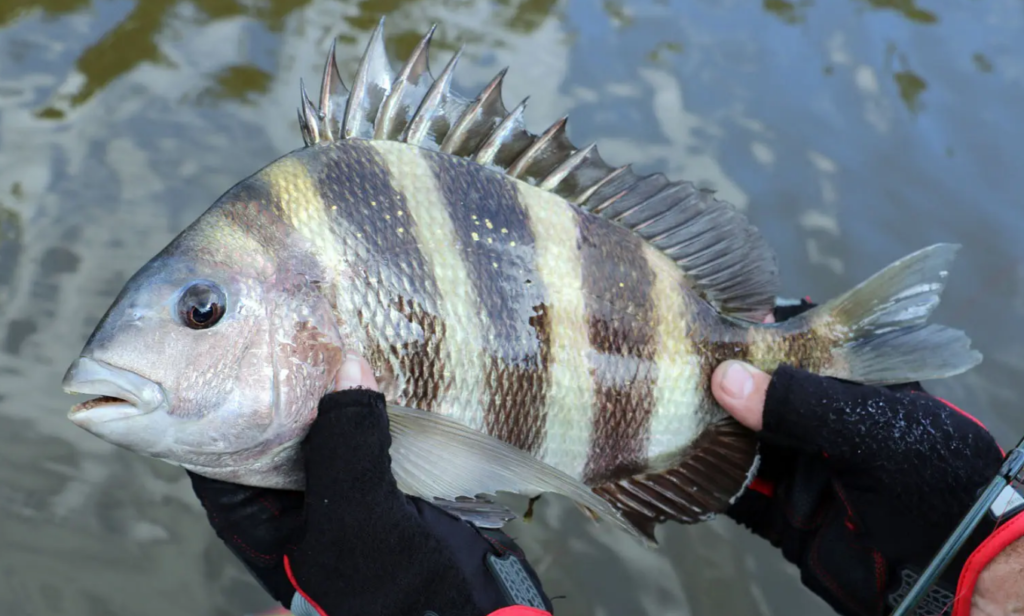
The fish also have sharp spines running down their backs. Most sheepshead fish grow to between 17 inches and 17.7 inches (43 to 45 centimeters) long. However, some individuals can reach up to 36 inches (91 cm long), according to the International Union for Conservation of Nature (IUCN). They are typically caught using rod and reel, and are prized by anglers for their tasty, white flesh.
But why do they call them sheepshead fish?
Sheepshead fish (Archosargus probatocephalus) is a species of ray-finned, predominantly marine fish commonly found along the eastern coastline of North America and South America. They are known for their front teeth, which can look uncannily like human teeth or those of a sheep.
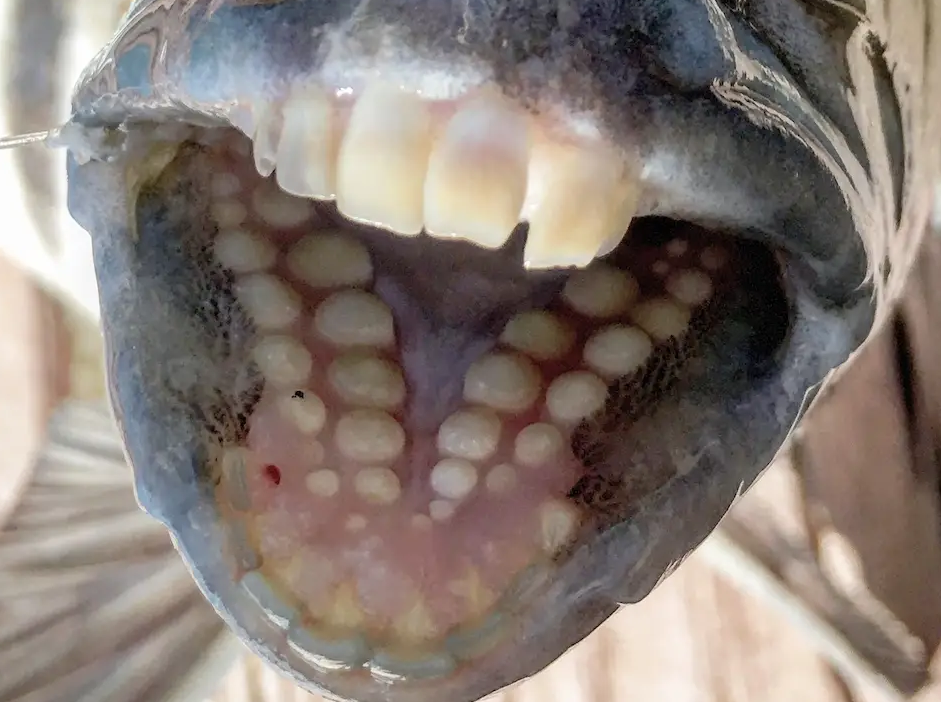
Because the sheepshead’s diet consists of mollusks and crustaceans, they have incisors to bite barnacles off of pilings, rocks and other underwater structure, and molars for crushing their prey’s tough shells. Sheepshead can have an average lifespan of 20 to 25 years, and can become sexually mature as early as one year of age. The current all-tackle world record sheepshead is A 21-pound, 4-ounce specimen caught in New Orleans, Louisiana, in 1982 is, according to the International Game Fish Association.
Sheepshead fish should not be confused with a similarly named species of fish on North America’s western coastline called the California sheephead (Semicossyphus pulcher). While both fish species have teeth, they are not closely related and belong to different families. Young black drum are often mistaken for sheepshead due to their black and silver stripes, but they generally grow out of this as they reach maturity and adopt a more even silver-gray color.
Sheepshead Fishing Regulations
Before you go sheepshead fishing, it is important to be aware of the regulations in your area. In most states, there are specific size and bag limits for sheepshead, and it is illegal to keep undersized or over-the-limit fish. Be sure to check the regulations in your area before you go fishing.
Best Times and Places to Fish for Sheepshead
To catch sheepshead, it is important to understand their behavior. Sheepshead are known for being difficult to hook because of their teeth, and can be difficult to catch if you do not know what you are doing. Sheepshead are typically found around structure such as docks, piers, jetties, natural reefs and rock formations as well as hard or rocky bottoms that have deep holes and channels in them.
They feed primarily on crustaceans such as crabs, shrimp, and barnacles, and are known for their powerful jaws, which can crush even the toughest of shells. Sheepshead gather near reefs, docks, jetties, and pilings, so It’s not uncommon to catch them fishing near or directly from the dock. They tend to avoid strong currents, so be sure to look for them around the backside of the structure, where they’re more protected.
The best times and places to fish for sheepshead are early in the morning or late in the afternoon when the water is cooler. Sheepshead can be found year-round in the Gulf of Mexico, although they are more active during the winter months. Sheepshead are typically found around structure such as docks, piers, and jetties, as well as natural reefs and rock formations.

Sheepshead tend to be really active in the colder months but in the hotter months, it seems they hold really close to the bottom where the water is cooler. When targeting sheepshead during the summer, fish pylons that are closer to a channel where the water is deeper and cooler.
Sheepshead is one of the few fish inshore that will bite well through a slack tide. They are also willing to bite throughout the entire day. You just need to find them and present a bait to them that they want to eat. The best time to fish for Sheepshead is during the incoming and outgoing tides – preferably both so you want to target a day when high tide is near midday. High tides cover the structure with water and the tidal flows move tasty crustaceans within reach of the hungry Sheepshead.
Tackle and Equipment for Sheepshead Fishing
When fishing for sheepshead, it is important to use the right tackle and equipment. A medium-weight 7′ -7’6” medium-fast action spinning or baitcasting rod, paired with a reel with a high gear ratio, is ideal for sheepshead fishing. You will also need a strong, abrasion-resistant fishing line, as sheepshead are known for their sharp teeth and strong jaws.
How to Rig for Sheepshead Fishing
When rigging your line for sheepshead fishing, it is important to use a strong leader and a small hook. A 1/0 or 2/0 long shank J- hook or octopus hook, the smaller hook size with the long shank will help get your hook passed all of those teeth and increase you chances of catching instead of just feeding the Sheepshead.
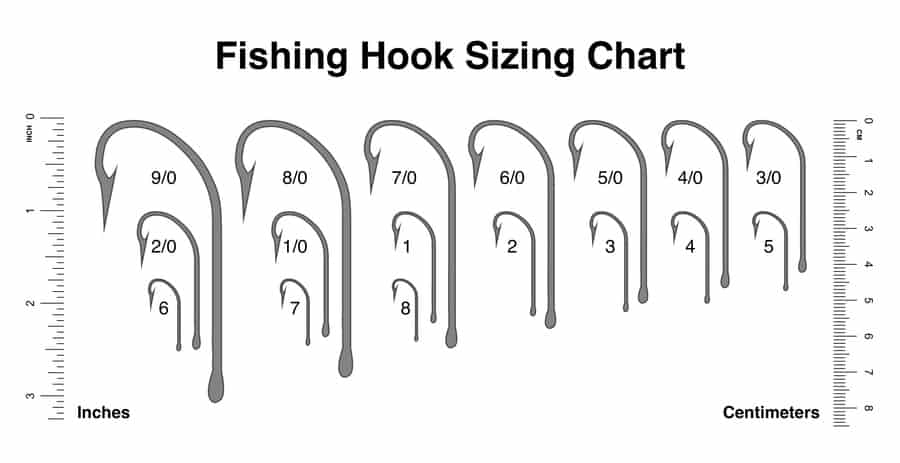
One of the best ways to catch sheepshead is to target them around any underwater structure that has barnacles on it with a #2 sized J hook and a small piece of shrimp and a 3-foot section of 8 to 10 pound fluorocarbon or 20-pound monofilament leader and attach it to your main line with a swivel.
The drop shot rig is another great option to use for sheepshead. It makes it easy to get your bait where you want it close to the docks, bridges and pilings. It will keep your bait just off the bottom, so you don’t catch as many catfish, which is a great benefit as well.
Big sheepshead are powerful fighters and they hang out around pilings, docks or some type of rocky structure that can cut your line. A 20 pound test line in either monofilament or braid is recommended. You could go lighter, but you may lose some fish if you go lighter. Getting these fish away from the snags as quickly as possible is the challenge.
Braid is much more sensitive than mono allowing you to feel the bite right away and may help you hook more fish. Sheepshead are notorious bait stealers and have a very light bite, braid will make it much easier to feel when the fish picks up your bait so you can set the hook before they get off with your bait.
What about Artificial Lures for Sheepshead?
Yes sheepshead will take artificial lures such as bucktail jigs and soft plastic baits crab and shrimp imitations, particularly those scented baits like those from D.O.A. Lures and fishbites, or lures with added shrimp or crab scents, like Berkley Gulp, or with added attractants like SuperGel from Procure.
One of the best sheepshead lures are sheepshead jigs. These are football jig heads with an octopus hook. The hook is attached to an eye on the jig head allowing it to move in the current. These are bare hook jigs that are baited with a piece of crab, shrimp, or sand flea. The movement of the hook makes for a more natural presentation and more strikes from hungry sheepshead.
Choosing the Right Bait for Sheepshead
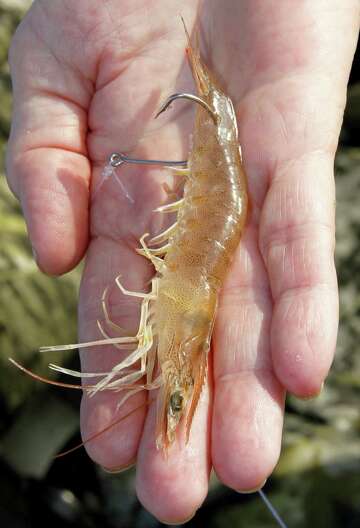
Sheepshead are primarily crustacean feeders, so the best baits to use are live or fresh dead shrimp, fiddler crabs, or sand crabs, fiddler or mud crabs, hermit crabs removed from their shells, blue crabs, oysters or fishbites in shrimp or crab flavor. Sheepshead will also eat squid, barnacles and clams. If, you can’t get those then frozen shrimp will work too.
Sheepshead love shrimp, both live and fresh dead shrimp, in fact that the world record sheepshead weighing over 21 lbs., was caught on a live shrimp. Shrimp can be purchased at almost any coastal bait shop however, you want to skip the frozen shrimp that has begun to change colors and looks like it has started to freezer burn.
Tips and Techniques on How to Catch Sheepshead
If, you want to catch more sheepshead, there is a few tips you should keep in mind. First, always fish around structure such as docks, piers, and jetties. Sheepshead are attracted to these areas because they provide shelter and food.

Second, use a light touch when setting the hook. Sheepshead have very sensitive mouths, and if you set the hook too hard, you may pull the bait right out of their mouth. Finally, be patient. Sheepshead can be very finicky, and it may take some time to entice them to bite.
One of the most effective techniques for catching sheepshead is to use a jighead tipped with a small piece of shrimp or crab. Cast your line near structure such as a dock or pier, and let the jighead sink to the bottom. Once you feel a bite, set the hook quickly but firmly.
Another effective technique for catching sheepshead is to use a Carolina rig. This rig consists of a small egg sinker, a swivel, and a short leader with a small hook. Attach a piece of shrimp or crab to the hook, and cast your line near structure. Allow the rig to sink to the bottom, and then reel in slowly, keeping the line taut. When you feel a bite, set the hook quickly but gently.

You can trigger sheepshead feeding frenzy by chumming them up. Sheepshead lives on a heavy diet of barnacles. Often you will find them around piers and pylons feeding on the barnacles growing on the pilings. A common method of chumming for sheepshead is scraping barnacles off piers, pilings, and sea walls.
As the barnacles, and their scent, drift in the current it will draw hungry sheepshead to your location and they will be ready to eat. And remember, sheepshead often gather in schools, so if you hook up to one fish, chances are there are more in the area. Keep casting into that general location to catch more fish out of the school.
Common Mistakes to Avoid When Fishing for Sheepshead
If, you want to catch sheepshead successfully, there is a few common mistakes you should avoid. First, do not use too heavy of a line. Sheepshead have very sensitive mouths, and if your line is too heavy, they may feel the resistance and spit out the bait. Or, they may see the line in clear water and avoid your bait altogether.
Second, do not use too large of a hook. Sheepshead have small mouths, and a large hook will not fit properly and you will end up feeding the fish instead of catching them. And remember, do not be too aggressive when setting the hook. Sheepshead have relatively small mouths lined with lots of teeth. If, you jerk the line too hard or too soon, you may simply pull the hook out of their mouth and they will escape with your bait. 😉
Cleaning and Cooking Your Sheepshead
Sheepshead, have a shellfish flavor that is both sweet and tasty, often called “poor man’s lobster”. The reason for their distinctive flavor is because of their highly varied diet of shellfish, shrimp and crabs. Once you have caught your sheepshead, it is time to clean and cook it. Sheepshead are known for their tasty, white flesh, which is firm and mild.
To clean your sheepshead, first remove the head and entrails. Then, use a fillet knife to remove the skin and bones. If, you want, you can cook your sheepshead with the skin and scales on the filet, called “on the half shell”. Sheepshead is most commonly served raw, grilled, fried, baked, steamed, broiled or sautéed. It’s a very versatile fish. Because of its mild and sweet flavor, you can cook it in any number of ways.
Garlic Parmesan Baked Sheepshead
Ingredients
- 4 sheepshead fillets – skinless and boneless
- 1-2 tablespoons of mayonnaise
- Salt and cracked black pepper, to season
- Garlic powder, to season
GARLIC PARMESAN CRUMBLE
- 1/2 cup panko breadcrumbs
- 2 tablespoons fresh parsley, finely chopped
- 1/2 cup Parmesan cheese
- 3 cloves garlic, minced
- 4 tablespoons olive oil
- Salt and cracked black pepper, to season
- Squeeze of lemon juice

First, turn your oven on to 400 degrees and then prepare your Parmesan crumble. For the Parmesan crumble…add all the ingredients below and combine it really well together. Next, you’ll need to put your sheepshead fillets onto a parchment paper lined baking sheet and add your mayo (I used a brush to evenly spread it on there) and then your salt, pepper and garlic powder. Then, you’ll be ready to add your Parmesan crumble on top of your mayo topped fish but I wouldn’t add the crumble until you are ready to put your fish in the oven!
We baked our fish for about 12-15 minutes and then turned on the BROIL for about 1 minute or so to really crisp up the Parmesan crumble! We had pretty thick fillets of sheepshead so just remember that the thinner or thicker your fillet of fish determines how long to bake them in the oven.
Sheepshead Ceviche
Frequent Questions on How to Catch Sheepshead

What is the best bait to use for sheepshead fishing?
The best bait to use for sheepshead fishing is live or fresh dead shrimp, fiddler crabs, or sand crabs.
What is a Carolina rig?
A Carolina rig is a rig consisting of a small egg sinker, a swivel, and a short leader with a small hook.
What is the best time of day to fish for sheepshead?
The best times of day to fish for sheepshead are during the early morning and late afternoon, when the tide is moving.
How do you clean and prepare sheepshead for cooking?
To clean and prepare sheepshead for cooking, first remove the head and entrails. Then, use a fillet knife to remove the skin and bones. Sheepshead can be prepared in a variety of ways, including grilling, baking, and frying.
What are some common mistakes to avoid when catching sheepshead?
Some common mistakes to avoid when catching sheepshead include using too heavy of a line, using too large of a hook, and being too aggressive when setting the hook.
Sheepshead Fish – Great Sport and Good Eats
Fishing for sheepshead can be challenging and reward you with some tasty fillets. By understanding the behavior of sheepshead, using the right equipment and bait, and employing the right techniques, you too can catch the convict fish. Remember small hooks, fresh bait and a light touch when setting the hook.
They’re fun to catch, fight hard and are great eating. And, by targeting them for the dinner table, we can take some of the pressure off of the more popular species. So, next time your looking for some fish for the fryer, consider the sheepshead you won’t be disappointed.
As always, stay safe, enjoy the journey and please try to leave it cleaner than you found it. If, you have any comments, questions, ideas or suggestions please leave them in the comment section below and I’ll get back to you asap. You can follow us on Facebook: Rex The Beach Angler, Instagram: thebeachangler7, Twitter: @AnglerBeach, and YouTube: Man Art Creations.

P.S. Thanks so much for checking out our blog we really appreciate it. Just so you know, we may receive a commission if you click on some of the links that appear on our site. This helps us keep our content free and up-to-date for everyone. We appreciate your support!”
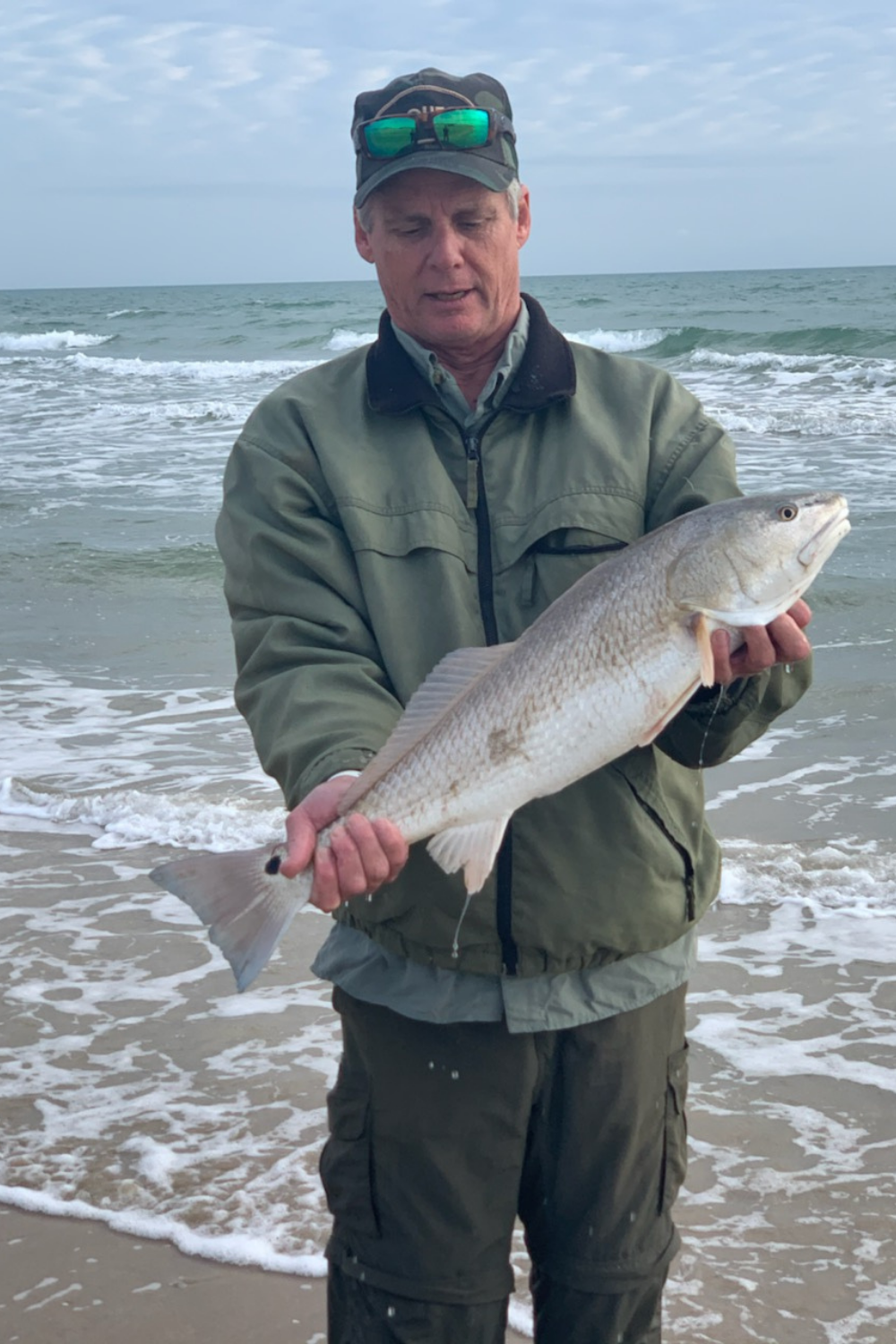
A life long surf fisherman with 50+ years of experience, I am also an avid hunter and outdoorsman. I will be sharing my passion for the outdoors with you so be prepared for hunting, fishing, camping, hiking and more. Along with gear reviews and the latest trends and innovations in the outdoor industry.
